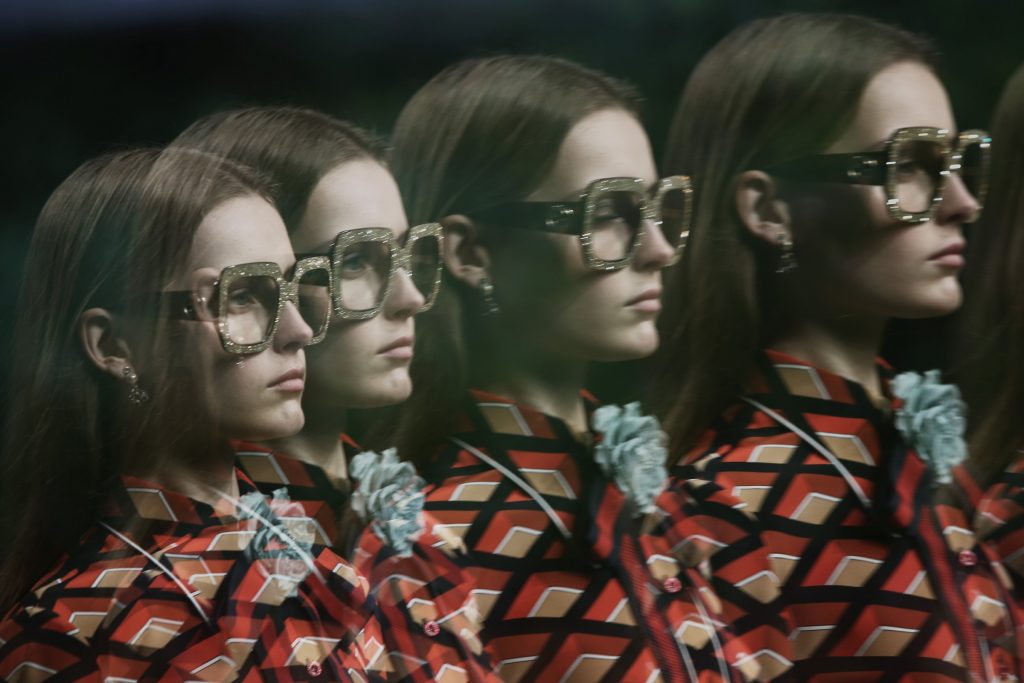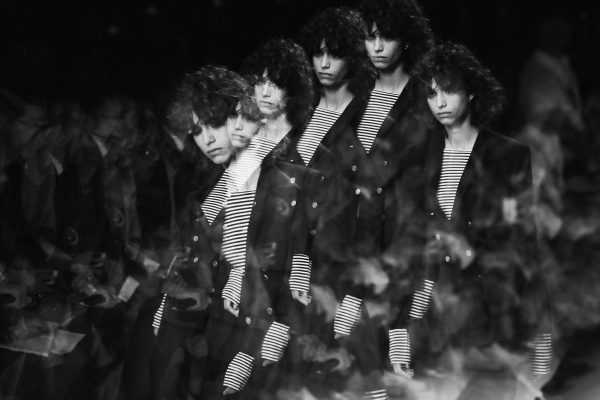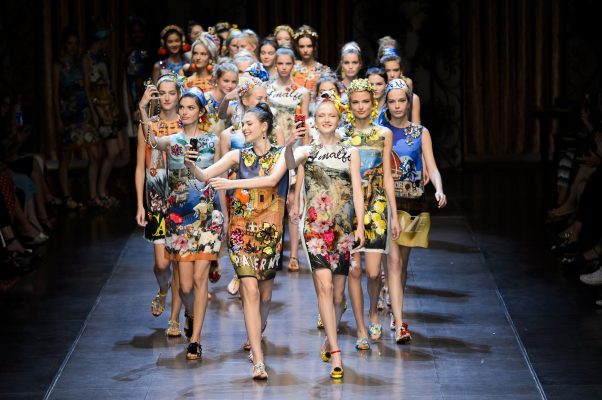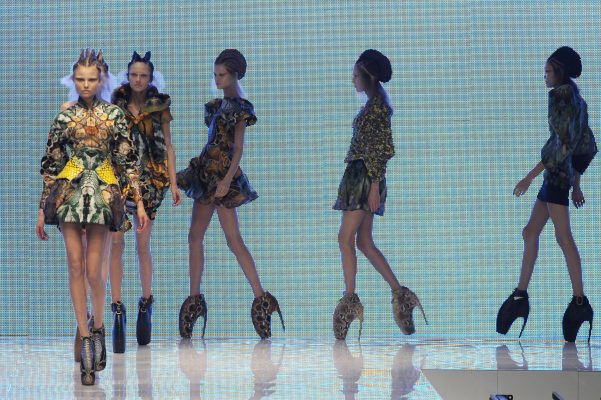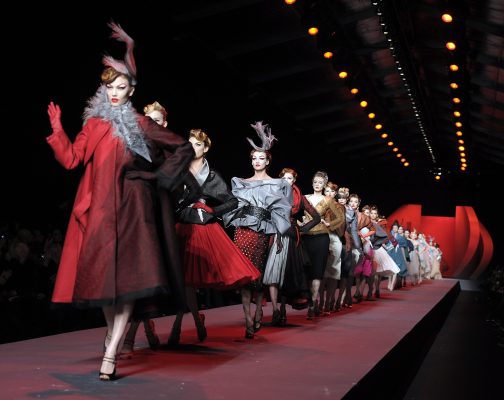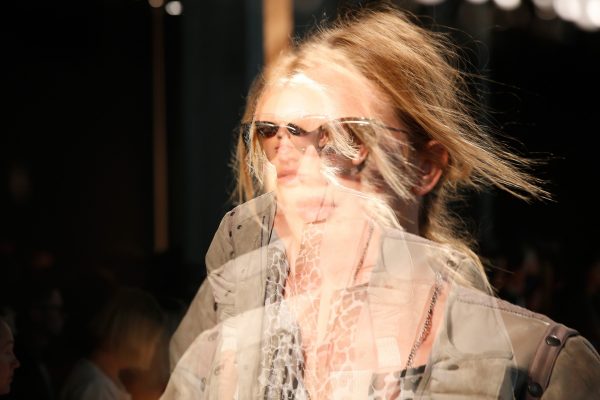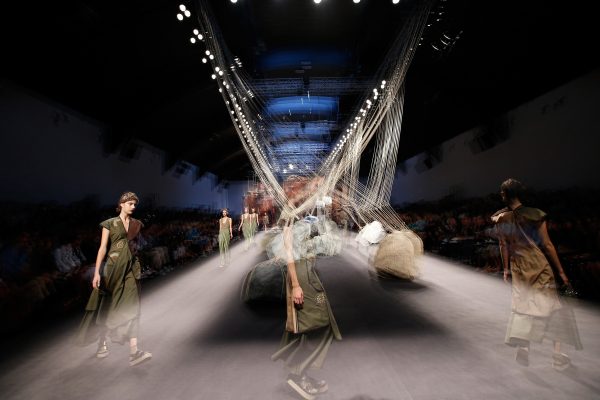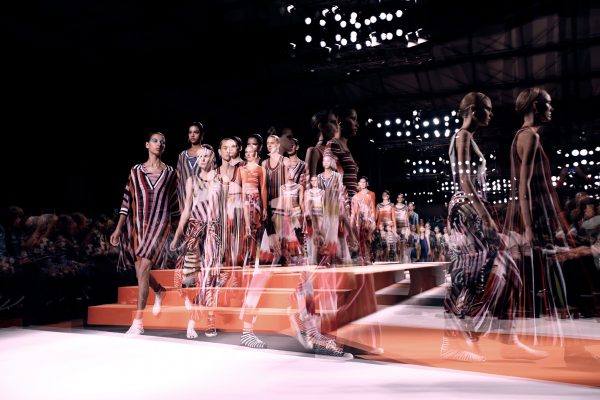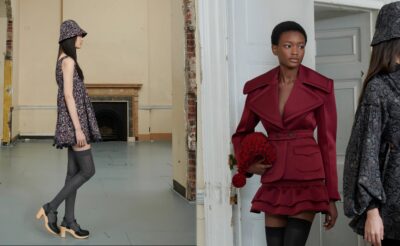From Raf Simons’s shock exit out of Dior to Alexander Wang’s decision to step away from Balenciaga to concentrate on his own label, the current state of fashion is being questioned. In our latest issue of MOJEH we asked: Are we moving too fast?
By Susan Devaney
The fashion industry is no stranger to speed. Designers can appear to play a musical game of chairs as they hop from one label to the next, churning out (at least) six collections per year, and leaving a feeling of a merry-go-round style state of play. January is haute couture; March is ready-to-wear; May is cruise; July couture again; September ready-to-wear again; November resort, menswear, jewellery collections, capsule collections, collaborations… but has the system reached its speed limit and finally crashed? “When you do six shows a year, there’s not enough time for the whole process … you have no incubation time for ideas,” said Raf Simons, during an interview with System (an independent magazine based in London), before he, after three-and-a-half years, decided not to renew his contract with Dior during the summer. “Technically speaking, it works, but does it work for me emotionally? No, because I’m not the kind of person who likes to do things so fast,” he told interviewer Cathy Horyn. Although the interview took place before the news broke, one thing was clear: He couldn’t go on. Simons released a statement saying his decision was “based entirely and equally on my desire to focus on other interests in my life, including my own brand, and the passions that drive me outside my work”. In other words, he needed to preserve a work-life balance.
It’s not just the clothes they have to consider. There’s the advertising campaigns, personal appearances, store openings, global visits, trunk shows, museum exhibitions, interviews, and not to forget the strong social media presence. Is it any wonder then that designers are struggling to keep up the pace? Esteemed fashion journalist Suzy Menkes put her thoughts into words for Vogue UK’s website, in her article ‘Why Fashion Is Crashing’, addressing issue after issue, challenging the industry’s current set-up. She wrote: “Designers – by their nature sensitive, emotional and artistic people – are being asked to take on so much. Too much.” Highlighting the moral are tales of John Galliano and Marc Jacobs’s substance abuse issues: “We all think of Lee McQueen and his tragic ending; of Marc Jacobs lurching through his punishing schedule until he finally gave up Louis Vuitton for his own label. With Dior again in the news, the fashion world gulps and thinks of John Galliano, his drunken anti-semitic raving and the shocking end to that chapter of a brilliant career.” In an interview with Vanity Fair, Galliano spoke of his own burnout: “With more collections, the crash happened more often, and then I was a slave to it.” Rightly so, Menkes concluded by praising Simons for “his brave stand”.
And then, there’s Alexander Wang. In July, Balenciaga announced his departure from the brand after three-and–a-half years at its helm as creative director. “It’s been an incredible experience to work with a couture house in Paris,” Wang said in a statement. “I am honoured to have had the opportunity to work for this historical maison. I would like to thank the brilliant team at Balenciaga for this collaboration and for what we have accomplished together, and I am looking forward to taking my own brand to its next level of growth.” Working across the board for both Balenciaga and his own eponymous label, Wang’s creative visions were stretched across not one, but two houses. In a similar standing, the young up-and-coming designer, J. W. Anderson, designs for his own label and Loewe. In an interview this year with MOJEH, we asked him how he protects his creative freedom. “I think you decide that yourself. I think that is something in the person. You know whatever you feel is right. At the moment, for me, it feels right to work at Loewe – if that makes sense? I feel completely creatively free in a very large company – because I live and breathe it. I pretend it in my head that it’s mine. [This allows me] to do my job,” he concluded.
But, some designers have put protective mechanisms in place, like Phoebe Philo of Céline, who refuses to leave London for Paris. When MOJEH interviewed her back in 2014, she told us: “I love being incognito and very much value my freedom.” Or, Hedi Slimane, who packed up his Saint Laurent studio for a more laidback life in Los Angeles. Designers throwing their weight around, so to speak, are having the most success in protecting their well-being. But, with little known designers being snapped up to take over the helm at brands (Alessandro Michele at Gucci and Demna Gvasalia at Balenciaga), they may be less likely to push for protection. In our interview with Gvasalia, before he’d been announced as Wang’s predecessor, we asked him: “What opportunities do you get as a young label that you never had whilst working for a well-known luxury brand in Paris?” In reference to his job as creative director for the up-and-coming Parisian brand Vetements, he replied: “The freedom, which is the biggest luxury of all.”
The lines are blurring between what we’ve come to know as ‘fast fashion’ with luxury. Respected trend forecaster Li Edelkoort declared many months ago that ‘this is the end of fashion as we know it’. “The accumulation of a variety of elements indicates that the current fashion systems have reached a vanishing point: A lack of design and textile education, dire manufacturing conditions and unrealistic expansion expectations, overworked designers and absurd delivery drops,” she told MOJEH, during an interview in March 2015. And Edelkoort would know. For many decades, she participated in the process by forecasting ‘the next big thing’, but most importantly, she’s witnessed the rapid acceleration of product-to-shelf. She continued: “One sees an overdose of marketing and a surplus of out-of-touch advertising, an absence of responsible and critical journalism, old-fashioned retail concepts dating from the 19th and 20th century, a drastic economic slowdown and uninspired shoppers, who are no longer interested in the recycling of vintage styles. This means that the economy of clothes will take over from the turnover of fashion,” she continued.
And, it’s not only the creative directors who are struggling with the never-ending schedule; buyers and editors are expected to keep up-to-date too. With the instant notifications on social media, the fashion powerhouses have to be one step ahead of the rest. What’s Edelkoort’s solution? “The designing of clothes will have to change and become more involved, more knowledgeable and more inspired. Historic, folkloric and uniformed sources of inspiration will feed the teaching of other ways to design and conceive. Therefore, trend forecasting will change as well, taking its leads from social change and finding creative ideas within lifestyle trends and consumer behaviour. Like focusing on textiles, design and colours in favour of anecdotes, by analysing clothes from an anthropological point of view and celebrating well-conceived clothes, rather than fashion.” Everything needs to take one step back. Time and consideration need to be applied to every aspect of the process. In a way, we have moved beyond our control. As a result, the quality of reporting, designing, manufacturing and so on have suffered, as quantity has taken precedent over quality.
But, not all designers are in complete agreement. The ‘Kings of Print’ design duo, Peter Pilotto and Christopher de Vos of Peter Pilotto, spoke of their desire to remain positive in our interview with Peter in September 2015. “We always try to stay on the positive side with whatever is happening. I feel like the whole fashion cycle will keep on changing. Some elements are still like they used to be maybe in the Eighties rhythm, but obviously, the information flow is different nowadays. The whole system is going to change further, but I mean, it always has negatives and positives. It’s just important to remain positive,” he said. “It’s sometimes really great to have that deadline for a show collection, where loads have to be ready and then you can choose what you want to push further. There are lots of positive things in the process, besides the fact that the workload pretty much doubles since pre-collections. It is hard, but yet, it is a really exciting challenge,” he said. They made the decision to only introduce a precollection when they felt ready to do so and could cope with the demands placed upon them. “I feel like as a new brand, you should only start those pre-collections the moment you really feel ready for them. That’s why, at first, we started with pre – maybe four years ago, pre–fall. It is only our second that is in stores now. And, we haven’t shot it yet either, because we felt like we still wanted to test the waters before making it into a collection. It’s important to take it at a pace that feels right for you,” he said. But, with a continuing disconnect between creativity and commerce, going at a pace that suits a designer is exactly the problem in question.
Six days after Raf Simons told the industry he was leaving Dior, the oldest surviving French fashion house, Lanvin, announced that its creative director, Alber Elbaz, was leaving the company, “on the decision of the company’s majority shareholder,” Elbaz said in a statement. Accepting an award during the Fashion Group International Award at the end of 2015, Elbaz spoke of the constraints placed on designers today in an honest way that other designers, until now, have refrained from doing. “We designers, we started as couturiers, with dreams, with intuition, with feeling. We became ‘creative directors,’ so we have to create, but mostly direct. And now, we have to become image-makers, creating a buzz, making sure that it looks good in the pictures. The screen has to scream, baby.” First and foremost they are visionaries. Unlike Wang and Simons, Elbaz had been at Lanvin since 2001. Reviving the brand, he made it a favourite once again among women, and celebrities like Meryl Streep and Natalie Portman. And, he was loved by all for his both his genuine character and kindness. In the past, when he’s been questioned as to when he may leave the label, he’s always said he couldn’t leave because “they are my orchestra”. Although his departure was down to other driving factors, he has long voiced his disdain toward the direction the industry is currently taking saying, “I prefer whispering.” In short: Creativity and vision are finite. Simons should be held up as a poster boy for stepping down before the crash and burn. We must consider the speed, distance and time of the current fashion cycle. As Mr. Elbaz said at FGI, “Everyone in fashion just needs a little more time.”

